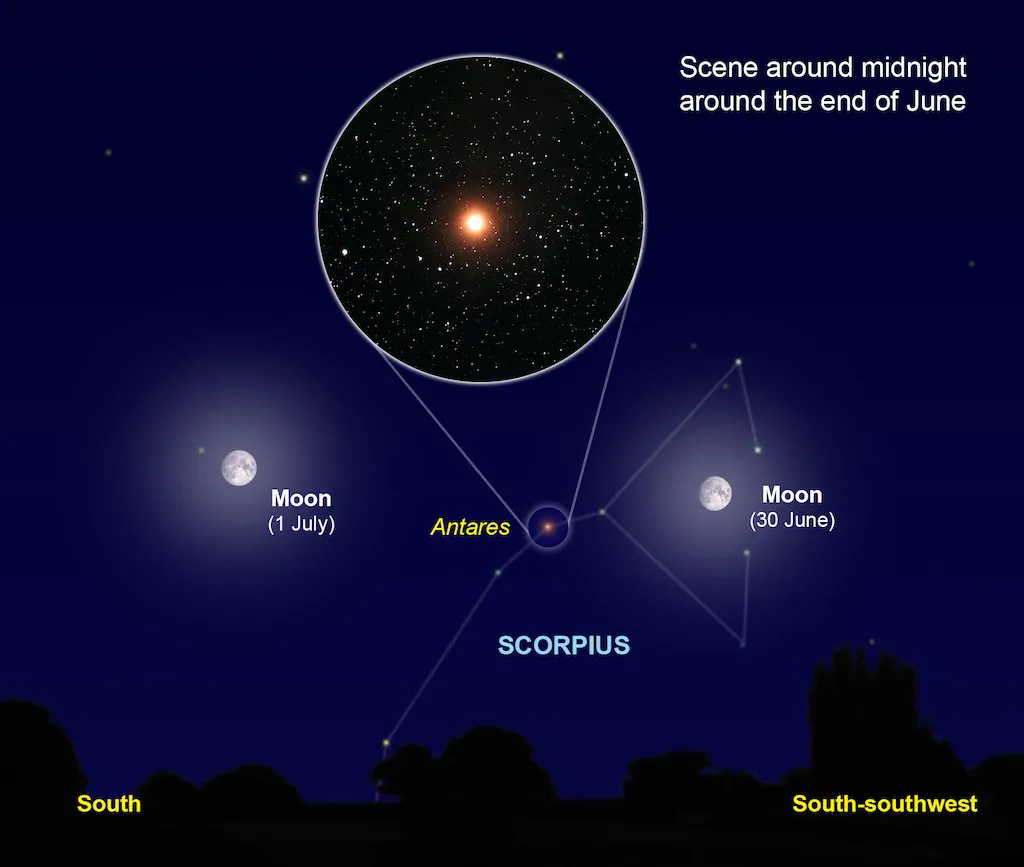If you’ve never seen Mars in the night sky before, you’ve just about got time as it’s still just about visible low above the west-northwest horizon shortly after sunset. It’s currently near to bright Venus which has also become rather low after the Sun sets. Mars is fading in brightness as the distance between it and Earth increases. Currently, it looks like a middle-bright star, its salmon-pink colour being the one characteristic that really makes it stand out.
At this time of year from the UK, there’s a bright star visible low above the southern horizon in the early evening as darkness descends. This is the brightest star in the constellation Scorpius the Scorpion and is named Antares. Star names can sometimes give a clue to their meaning.
Here, the name literally means ‘rival of Mars’ or ‘Ant Ares’, Ares being the Greek name for Mars.

It's an appropriate name too because Antares is a red-supergiant star, estimated to be nearly 700 times larger than our own Sun and around 75,000 times more luminous. In the night sky it appears on average (it’s an irregular variable) as the 15th brightest star and, like Mars, has a distinctly orange hue.
It marks the position of the heart of the scorpion. Scorpius is a constellation that never gets to reveal its true glory from the UK, truncated by our southern horizon when it's best placed and due south. As the sky darkens, look out for the two fainter stars that flank Antares and the group of stars further to the west (right) which mark the scorpion’s claws.
Read more: